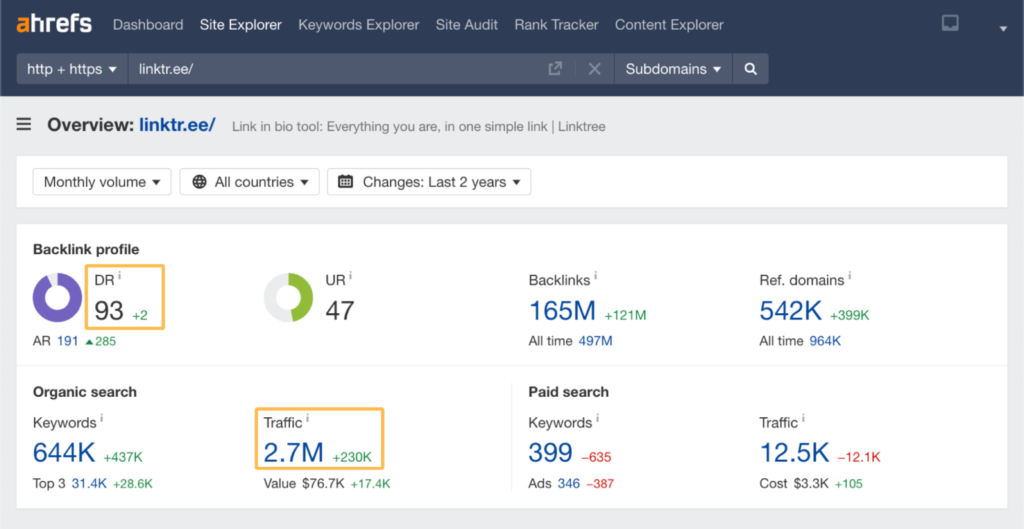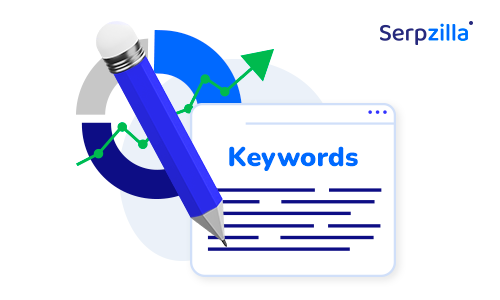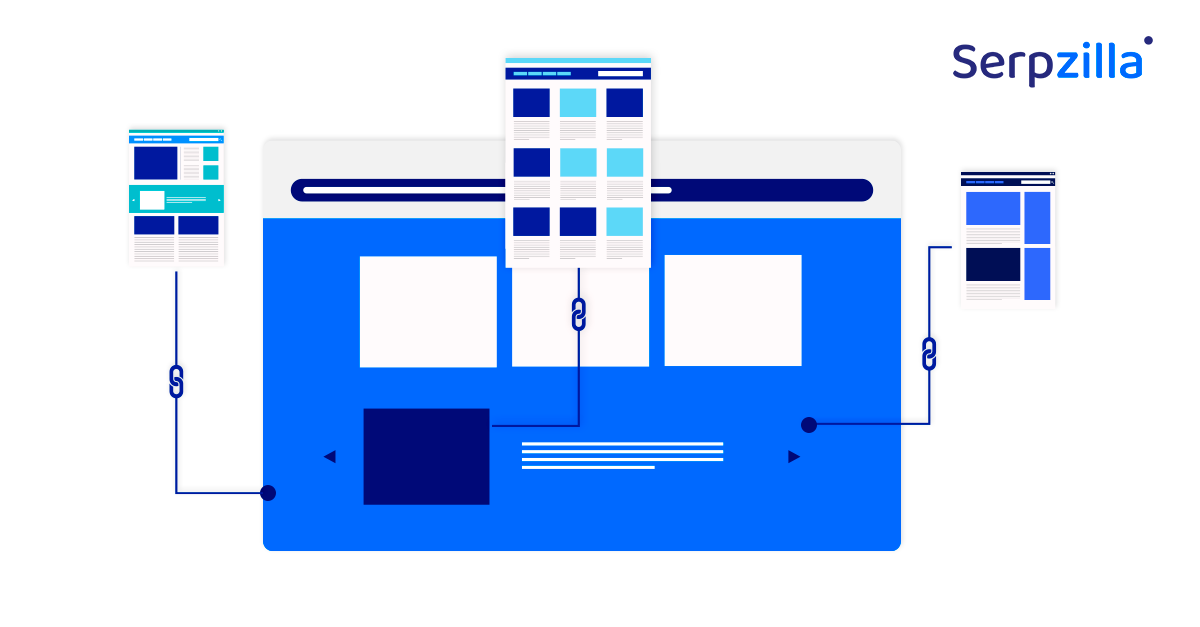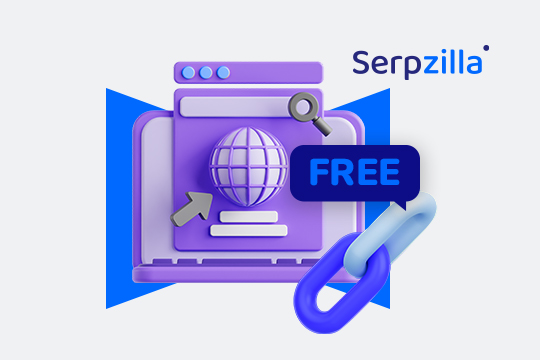SaaS as a business model has emerged not so long ago, but already has won a hefty share of the market: people like that they can get complete access to a complex product, with all the benefits and customization it provides, but without having to deploy and maintain it on premises. And, of course, without having to pay exorbitant sums for the deployment and maintenance. The market has quickly become competitive and today SaaS products depend on an effective and tailored SEO strategy to be able to reach the audience and attract the customers.
As part of such strategy, link building for SaaS products needs to be carried out with specific goals and rules in mind. Let’s dive into the details!
Why do SaaS products need tailored link building at all?
There are several reasons why you should never disregard your SaaS business specifics and use particular strategies when acquiring backlinks for your product. Here are only a few challenges that SaaS products encounter and that heavily affect a SaaS link building strategy:
Reliance on Inbound leads
Stats and multiple researches show that SaaS mostly acquires customers through inbound leads: a person reads a case study or an article about the product, watches a webinar and requests a customer demo. This means that the source and the piece of content where the link is placed was high quality and trustworthy enough.
Competition
In most business domains where SaaS products are present, the market is already mature with a handful of established big fish players dominating the market, so smaller companies always face challenges obtaining high-authority backlinks at a scale.
Niche Focus
Most if not all SaaS products are very domain or niche-specific, which creates a very limited landscape for backlink prospecting, without being about to rely on a broader media coverage.
SaaS-Specific Link Building Strategies
As you can see, the challenges are quite formidable, but you can employ certain link building strategies to address them.
Focus on High-Quality, Valuable Content
And when we say that, it doesn’t just mean a good blog post. With SaaS, the stakes on the content quality are much higher, because the more expertise and authority you demonstrate, the more inbound leads (and prospective customers) you have. That is why you will need to raise your content a few levels higher and deeper above the average.
Focus on expert level content: white papers, your own research and statistics, integrations and guest posts with known domain experts, valuable case studies.
For example, a Linktr.ee case study made by Ahrefs generated multiple excellent backlinks and subsequent leads.

Build linkable assets
Most SaaS suites already provide certain freebies to let the customers get the taste of what they can be getting with the full product. For SaaS, linkable assets such as tools, templates, scenarios, resources, code snippets for API handling, and valuable examples of usage for more complex features create an excellent linking opportunity that others in your domain will want to link to.
Partnering with Complementary Businesses for Link Exchange
This is one of the win-win strategies where you don’t have to market a competitor, but rather something that only enhances your own product, and so does the other participant of the deal. Many SaaS products provide integration opportunities with hardware vendors or other complementary service providers and you should always use these connections for their marketing potential. This is also a great chance to build long-standing solid partner relations and not just have your link and logo permanently placed on their main or partner page, but create bundle products for mutual profit.
Guest posting with high-authority blogs
Although the strategy is quite universal, it plays an especially important role in link building for SaS products. This is mainly because among blogs it is much easier to find your necessary niche focus. In other words, whatever your domain is, chances are, there will be several well-established blogs who write specifically about it as their main topic or as part of their slightly wider coverage.
Technical Aspects of Link Building for SaaS
As you have already understood, link building for SaaS requires some extra care. You invest in creating not just high-quality, but expert, in-depth content, you operate with a rather limited pool of sources, so you should take extra care not to let all that effort go to waste by neglecting straight-forward technical aspects.
Diverse anchor texts
Anchor text is the clickable text of your link, and Google uses it to understand how other websites refer to you and what your content will be about. For tactical links, use keyword-focused but grammatically correct anchor text. Avoid using exact-match anchors excessively, such as text that matches your target keyword. Create a blend of relevant generic, partial match, and branded anchors.
Carefully Weighed Combination of Dofollow and Nofollow links
Nofollow links work specifically fine for SaaS. They may not count towards Page Rank, but they can drive traffic and generate precious inbound leads – the ground on which SaaS marketing stands. But do take extra care to mark obviously paid for links as nofollow – the stakes on a Saas product reputation with Google are higher than average.
Pay Attention to Specific Link Placement Types
Make sure you monitor for brand mentions without a link, broken links, testimonials, software reviews and comparisons, Q&A sites, roundups, trend reports where your brand name is being cited. All these are absolutely legit link sources which do not require investment into top-notched and super focused content creation.
SaaS Site Optimization for Link Building
SaaS products are usually complex systems that require a steep learning curve, that is why SaaS vendors tend to have multiple online resources for customer success, support and learning. It would be a total waste not to use this opportunity to drive SEO optimization. The good thing is that it is a naturally created diverse content, all of which is valuable, variable focused. SaaS services will usually have expansive documentation portals, learning centers, case studies, how-to’s and tutorials. It is a goldmine for internal linking. Of course, it will take a SEO marketer some in-depth product knowledge to properly distribute the links, weigh the value of all the pages.
Supporting such a complex content system in an up-to-date SEO-optimized state may be a bit of a challenge and require extra care, but it will most definitely pay off. Make sure you start up with a transparent structure and hierarchy, use clean URLs and carefully evaluate and prioritize all pages.
Tools for Link Building for SaaS Products
It’s pretty clear that link building for SaaS products can take extra time and effort so you need to get whatever tool-based help you can access. There are plenty of tools out there that can enhance your analysis, data handling and monitoring as well as strategic planning and overlooking of your SEO campaigns.
We at Serpzilla can offer excellent opportunities for niche-oriented guest posting. Having an extensive pool of only proven sources, we are sure to offer choice blogs for every niche. Serpzilla also allows you to carefully select the blogs by relevance, domain authority, niche and many other factors, making your link placement as customized as it can get. You get to decide on your anchor text, content and placement details, and we automate and streamline the outreach and placement process, leaving you free to focus on more important aspects.
We also provide a user-friendly dashboard where you can keep close tabs on your placement and constantly monitor their performance, and take quick corrective actions, if necessary.

Common Link Building Mistakes for SaaS products and How to Avoid them
As we have already established by now, link building for SaaS is an extra murky water to swim in. Here are some common mistakes to avoid in order to navigate it successfully.
Not creating link-worthy content
Like we said, to get backlinks, your site needs to have link-worthy content that others could reference in their own content. And for SaaS link-worthy has a much more important meaning. It’s not just quality, it’s value, expertise, unique knowledge and usefulness, as it drives inbound leads.
Focusing on quantity over quality
Not all links are equal, and building low-quality links can hurt your SaaS website’s SEO more than for a regular domain. Instead, focus on building high-quality, relevant links from reputable websites. SaaS is an industry where less literally means more, because of its heavy niche focus.
Ignoring internal linking
Internal linking is an essential part of SEO, as it helps search engines understand the hierarchy and relevance of your pages. But for SaaS websites it is specifically important, as SaaS portals tend to have vast, naturally created and diverse content, and it would be a shame not to put it to great SEO use.
Not building relationships
Today’s link building is all about relationships and networking. Invest in long-term media relationships with editors, publishers, journalists, bloggers, and content creators to get links and brand coverage. Establish firm connection with vendors and providers of complementary products and services to advertise each other and multiply your mutual benefits.
Ignoring User Experience
Let’s imagine you’ve managed to drive good traffic and many prospective leads to your website. But if they become disoriented because your content is poorly readable or has low accessibility, if they have a hard time searching your resources for what they need further, they will leave with a bad taste and will not come back. Make sure your website offers a smooth, intuitive user journey and whatever your audience needs is only a couple of clicks away.
Future of Link Building for SaaS Products
Here are a few trends to look out for if you are marketing a SaaS platform. They will help you now and will most likely play a very significant role in enhancing your link building efforts in the nearest future.
Brand Awareness and Online Reputation
Like we said, SaaS is usually a sphere where everything hands on the thread of good repute and a loyal following is key. Although it is hard to build a reputation when there’s most probably already a well-established competitor in your SaaS niche, it is possible still. That is why, when cultivating your link-building profile, pay special attention to the authority of your link sources and avoid any situations where you can become associated with ill-reputed schemes.
AI usage in Link Building
AI can greatly help in automating link-building processes, conducting outreach and specifically in identifying and covering any blank spots in your link building campaign. You can use it to quickly point out new emerging keywords or less frequently used and unobvious keywords to greatly expand your keyword pool – something that is especially relevant for SaaS marketing. Employing the power of AI and Machine learning will help you to more clearly focus your efforts and analyze your competitors.
Enhanced Accessibility
Accessibility is usually something many SaaS products pay special attention to, as it is a feature that makes them stand out from products that need to be deployed and maintained on premises. That is why introduction of accessibility features such as voice search, mobile optimization will make you re-evaluate and shift your link building strategy. For example, this can shift your focus to local SEO, optimizing for long-tail keywords commonly used in voice searches, and ensuring that backlinks lead to mobile-friendly pages.
Key Takeaways
SaaS is a demanding sphere where link building also has its specifics, challenges and pitfalls. Disregarding them can make your SEO efforts go to waste or even be detrimental to your marketing. SaaS business model specifics require SEO optimization to follow a certain set of ground rules. If done correctly, this could enhance your link building, drive your content creation, engage your audience, and generate warm potential leads your product needs.









